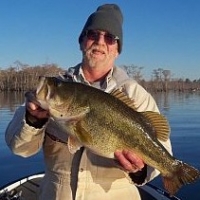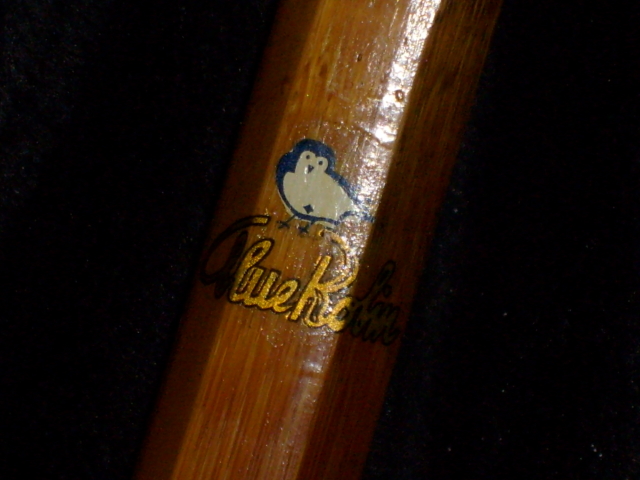I've caught bass on crankbaits, spinners, plugs and others. But for me, the most fun is plastic worms on a Texas Rig. Don't get me wrong, catching a largemouth bass is catching a largemouth bass, and I'd gladly catch one with my mother's toe nail if they'd bite it. What's my fascination with plastic worms and the Texas Rig?
Simplicity in changing baits from color to color and style, they are weedless and effective. But there's more to it. I love them because I feel they are more interactive and you have to fool the bass more than with other baits.
If you throw out a worm and just reel it in, you are not likely to catch many fish. You have to know how to work it and you have to be very patient in your presentation and when the fish hits.
Sometimes the strike will be like an explosion, and you and bass both know what's happening. Others it's very subtle. Sometimes you won't even know the bass has it until you reel in the slack and feel something different going on. Maybe there should be slack in the line but it's getting tight. Or vice-versa. Or maybe you can see the line going sideways in the water.
That's one of my favorites because you have to know the right time to set the hook. Set it too soon and the largemouth may not have it in it's mouth good. Set it too late and it might have spit it out. That's exciting; and frustrating.
The Texas rigged plastic worm (you can use it for other plastics, too) is very portable. If you want to hike around the lake and fish the shore, don't lug your whole tackle box. Just get a worm pouch, load it with a few favorite styles, colors, hooks and sinkers, stuff it in your back pocket and hit the trail.
Plus, you can change lures on the fly. Once your Texas Rig is set up, it's a matter of pulling the bait off the hook and sliding another on. No knots to retie. This gives you freedom to explore different colors and styles of plastics in a hurry.
In a Texas Rig, the sinker is a bullet slip sinker that rides freely on the line with nothing else between the rod and the bait (the benefit is that the bass cannot feel the sinker when it strikes). This drags the plastic bait down and allows it to bounce or swim along the bottom.
To set it up just run your line through a bullet slip sinker (best sizes are from 3/8 oz. to an ounce) and tie the line to a worm hook size 2 or 3. The twisted ones help with hookset.
Once you have the hooked tied on, run the hook tip through the end of the head of the plastic and push it in about a quarter of an inch. Now run the hook tip out of the plastic bait (belly side) and push the bait up the hook towards the eye. Bury the tip of the hook into the bait near the abdomen or egg sac.
Some people push it all the way through and snug the hook tip near the body (on the backside or top). This allows for better hook set, but results in more snags. I like to push it through just before it breaks out of the back where I can feel that it will pop through easily. If you do this, be sure to set the hook hard to penetrate the plastic.
When you cast the bait, let it settle all the way to the bottom and give it several seconds before moving it. Sometimes the longer you wait, the better luck you will have. Even 30 seconds or more.
Try different presentations from very slow to moderate (never very fast). I usually give the bait 1 or 2 short pumps, let it fall while reeling in the slack, then give it 2 or 3 pumps. Be careful. Always reel in the slack, but more often than not that's when you'll get the bite. They often hit it on the fall, so expect something every time you bring in the slack.
You can try longer pumps, like bring the line in 2 or 3 feet then let it settle. Try moving it painfully slow, try bouncing it quicker, try swimming it very slowly across the bottom and whatever else you can think of. When something works, stick with it.
Use the worms around vegetation and rocks. My best luck has been around trees in the water. Sometimes there will be trees that hang out into the water. These are hot spots for bass.
One trick I learned by accident is to cast the Texas Rig out over a weak limb hanging over the water. You want a weak limb because you want it to break or collapse when the bass hits, and it will. I move that plastic worm up and down, in and out of the water to tease and annoy the bass. If there's one there, you'll get a strike.
Happy fishin'
How To Direct A Bass Fishing Tournament

Road Bike Safety: Rules of the Road


Copyright © www.mycheapnfljerseys.com Outdoor sports All Rights Reserved